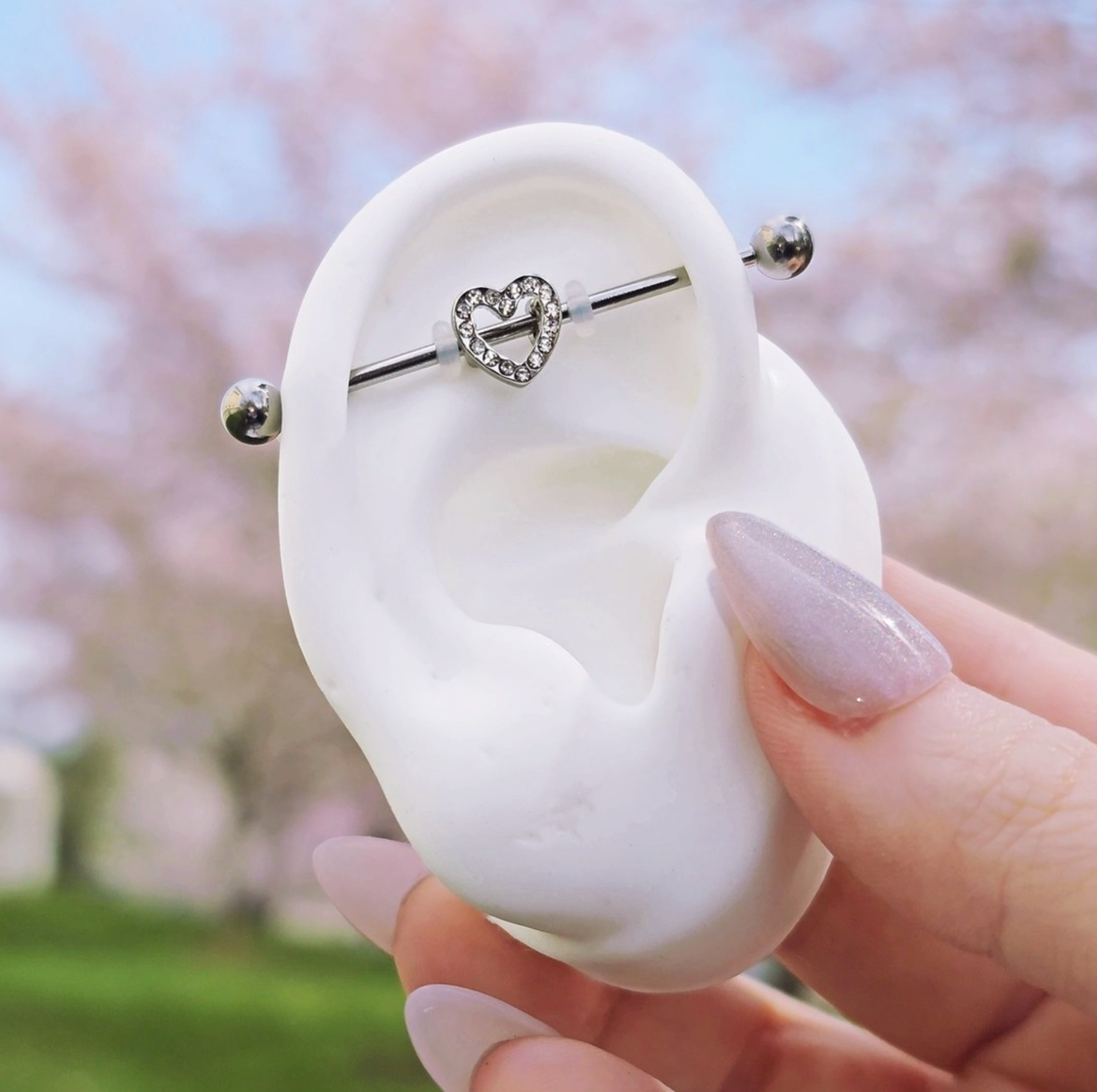
Have you ever seen a kitchen utensil that is a strand of wire held between the spokes of a “V”, attached to a short handle? This retro device is known as a cheese cutter. You may be wondering exactly what on Earth this has to do with piercings. Well, today we’re going to discuss nose jewelry, and something called the “cheese cutter effect”.
The original kitchen cheese cutter works because the thin wire cuts easily through the soft cheese. But another thing that is soft and cuts somewhat easily is human skin and cartilage. Most nostril piercings are performed using 16- or 18-gauge jewelry. The larger gauge allows for stability of the piercing while it heals. Nostrils should be pierced with a flatback labret stud to minimize irritation and movement, which allow for a smoother healing period and reduce the possibility of irritation bumps. Many people choose to downsize the gauge of their nose piercing after the healing period and replace it with 18- or 20- gauge jewelry.

This is where it gets tricky. The dainty, almost invisible look is quite popular for this particular piercing. Many people want to take that as far as possible and go for 22-gauge or even smaller diameter jewelry. And THAT is where they run into trouble. Particularly when it comes to circular jewelry. The motion of the ring moving back and forth in the piercing, combined with the extremely thin and wire-like gauge, can cause it to literally begin sawing through the tissue like a cheese cutter through…. well, cheese. This potential problem becomes magnified when the circular jewelry in question is of extremely snug diameter. If the ring fits very tightly, even more pressure is placed on the tissue, allowing that sawing effect to become even more profound.
So. How do you know if your jewelry is sawing away at your precious nostril? Well, the first thing you’re going to notice is that the round hole that used to be your piercing is developing a slit shape. It can happen anywhere on the piercing, depending on where the most pressure is being applied. The same way some people who wear extremely heavy dangle earrings on wire hooks get that slitted shape to their earlobe piercings over the course of years, the same will begin to happen to your nostril. If the problem is not addressed, the jewelry will continue to simply cut its way through the nostril.
The easiest way to prevent this problem is simply to use nose jewelry that is 20-gauge or larger and properly fitted to your nose. If the jewelry is tugging, it is too small. Nostril hoops are easy to find in 20-gauge and thicker, as are other styles of nose jewelry such as nostril screws. Even better, you can use classic piercing jewelry, such as a captive bead ring, which are available in a dizzying array of gauges and diameters, as well as colors. If you are having trouble finding a comfortable and aesthetically pleasing size for your piercing, this may be the way to go.

The cheese-cutter effect, despite the somewhat silly name, is a real and serious issue for piercings. It can happen in any piercing, not just the nose, where jewelry thinner than 20-gauge is worn. The best way to play it safe is to make 20 the magic number and make sure your jewelry is no thinner than .8 millimeters/20 gauge. Also be sure that the diameter of your jewelry is appropriate and that it’s not too tight for your piercing. Happy piercing!






